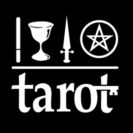The ghayb or unknown has been part of my life ever since I started to study with Punditt Maharaj, and it continues with Pundit Joshi. The ghayb acts as a black box – things come out of it and you don’t know why, how, where, or what happened. It’s a mystery that is fortunately mastered by the Pundits I have had the good fortune to study with.How the ghayb works is when I am trying to understand an aspect of spiritual knowledge, then I get faint nudges from somewhere to read a particular book or search online. Resistance is futile, so I cave in, and sure enough I learn something. In the following days I have dreams or spiritual experiences that allow me to go deeper into subject. It is fascinating.
Being in the Unknown or ghayb is liberating because there are no boundaries or limitations, because you cannot see or experience boundaries or limitations, only darkness that becomes self-illumined. It is being in the question, rather than answer. The answer closes down the energy – the question keeps you looking for more.
Tarot readers like to know only the divinatory meanings and keep everything neat and tidy, which is of course not how our lives are. For me, the Unknown is a living experience and it works – I just can’t explain it. That has been the state of play for many years, but recently I found confirmation from an unlikely source – psychotherapy. Sigmund Freud defined transference as the unconscious redirection of feelings from one person to another. Psychologists and psychiatrists study transference, and they know the characteristics of it, but they don’t know how it works.
At the start of a tarot reading, usually within a minute or two I start to experience how the client is feeling, and it is spontaneous. I am often better at articulating those feelings than the client, who is usually a woman – and I am a man, if you didn’t know! This is before we even get to shuffling the tarot cards. Sometimes it is a sensation, sometimes I see things, either way the transference is working. A dialogue is initiated between myself and the client which allows us to work through whatever comes up, in my own awareness, through the tarot, or any revelations the client has, which often clarifies other areas.
The classic method of psychotherapy is for the psychiatrist to be silent, often sitting behind the client who is lying on a sofa, while the client talks about issues, relationship or work problems, or other issues. Unlike the way I read the tarot, there are many tarot readers and clients who expect the reader to do all the talking, while the client gives nothing away. I did this once many years ago, and at the end of half an hour she said to me “I have not understood one thing you have been saying!”. I abandoned that approach in favour of a dialogue.
Comparing the traditional method of fortune-telling or reading the tarot where the reader speak and the client stays mute – it is an inversion of the classic Freudian method. In all respects the client is the analyst, and the reader is the analysand. No wonder tarot lacks any finesse.
It is time tarot readers recognised this process in readings, the experience will be richer for themselves, and for their clients.
